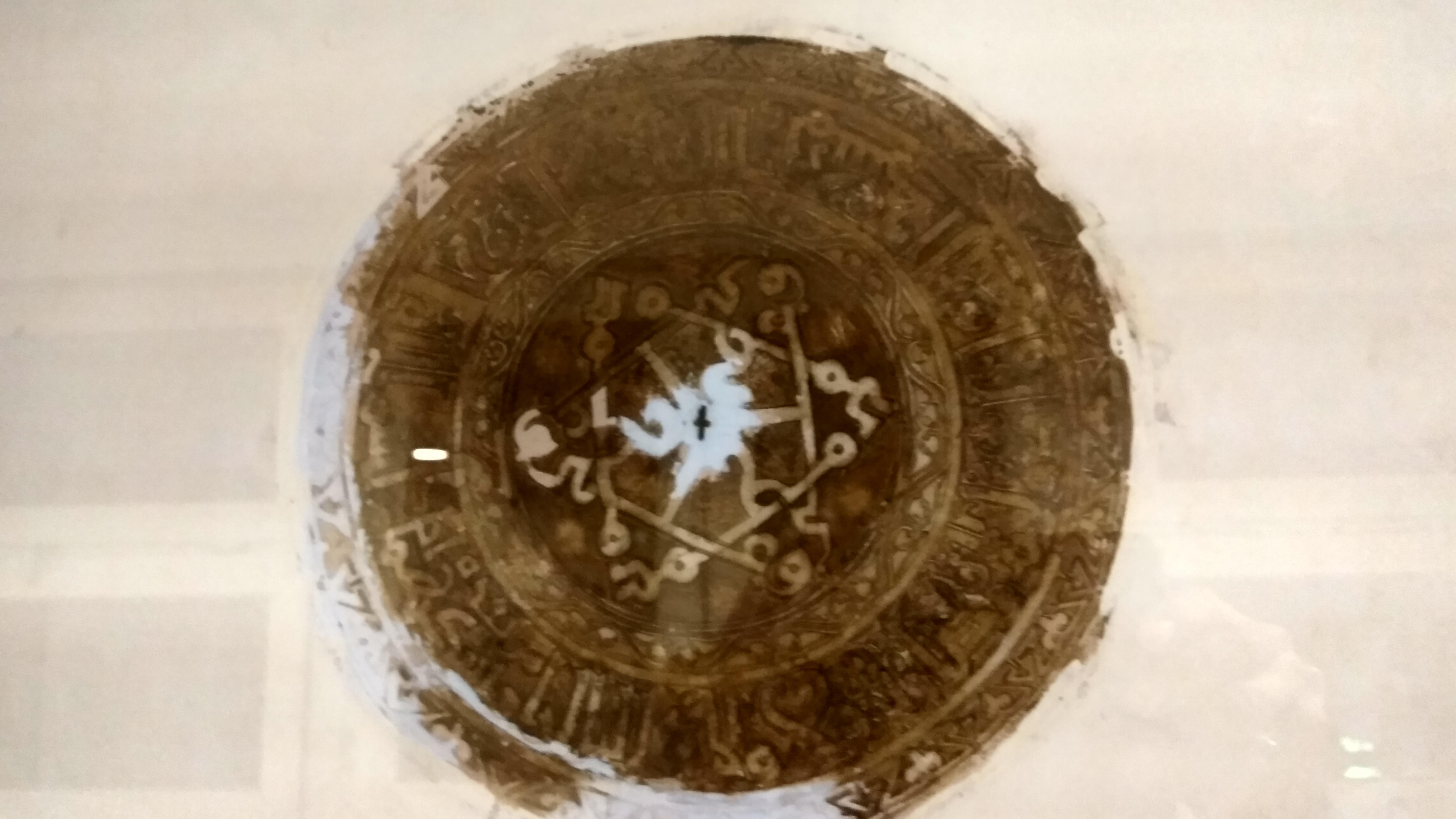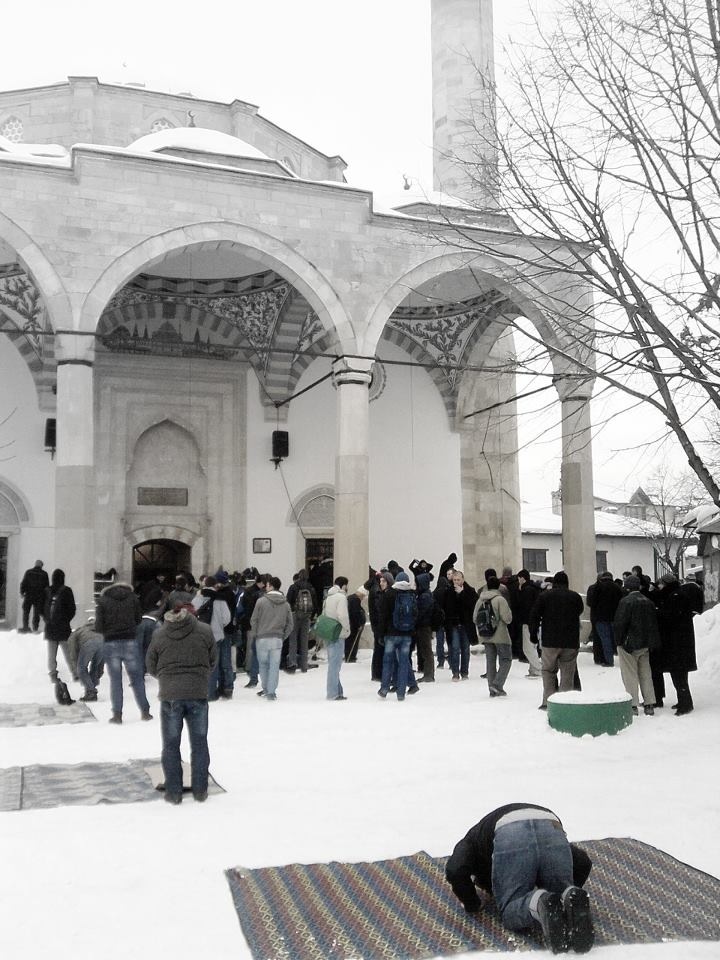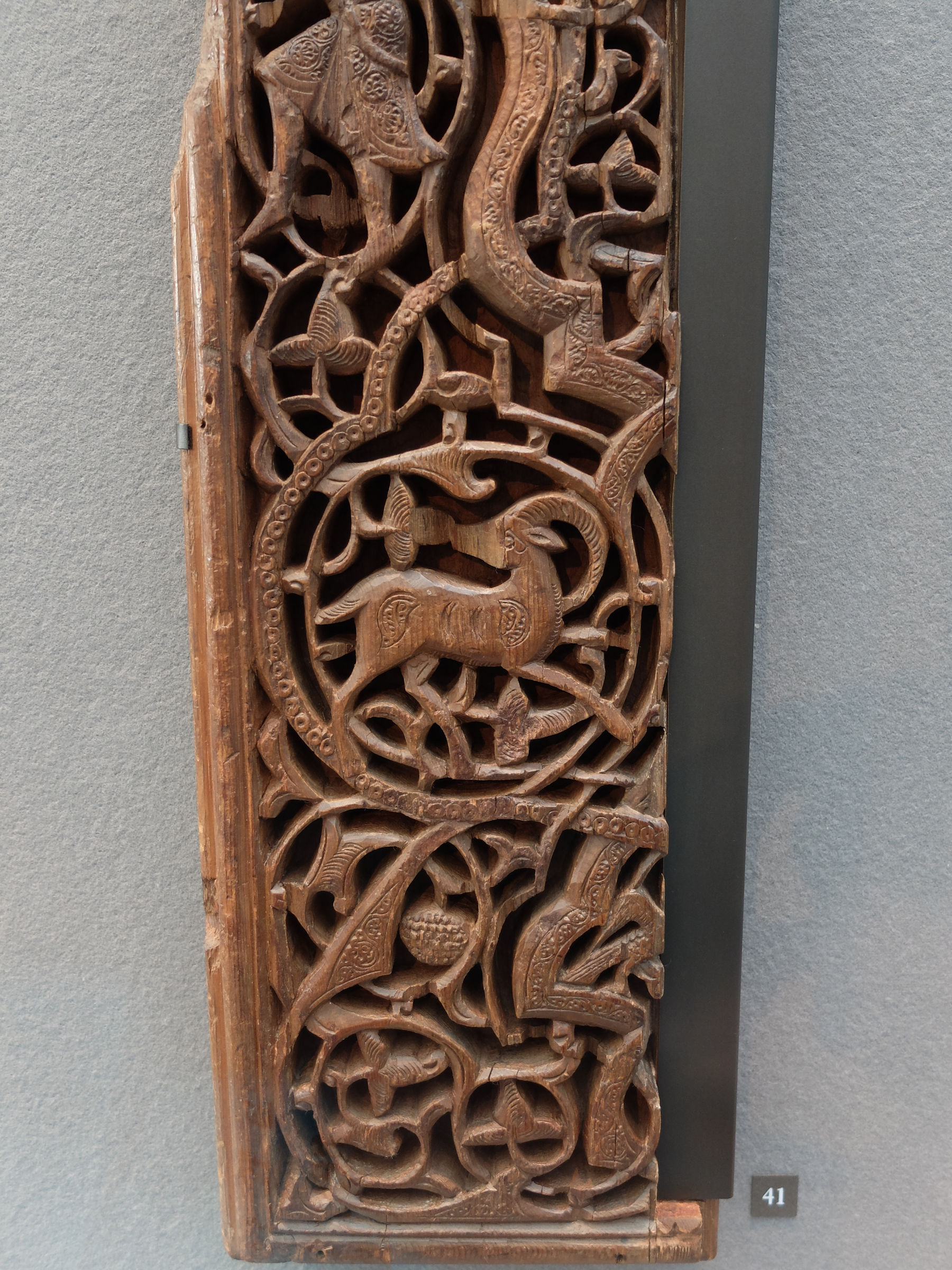|
Badr Al-Jamali
Abū'l-Najm Badr ibn ʿAbdallāh al-Jamālī al-Mustanṣirī, better known as Badr al-Jamali ( ar, بدر الجمالى) was an Armenian Shia Muslim Fatimid vizier, and prominent statesman for the Fatimid Caliphate under Caliph al-Mustansir. His appointment to the vizierate in 1073 restored the fortunes of the Fatimid state, which had faced collapse in the previous decades, but also began a period where the vizierate was dominated by military strongmen who held power through their military strength, rather than through the Caliph's appointment. An Armenian, Badr al-Jamali was the first of a series of viziers of Armenian origin, who played a major role in the fortunes of the Fatimid Caliphate over the subsequent century. Early life and career in Syria Of Armenian ethnic origin, Badr was born sometime between 1005 and 1008; he is recorded as being over 80 years of age at the time of his death. Badr was purchased as a slave (''mamlūk'') by Jamal al-Dawla ibn Ammar, ruler of Trip ... [...More Info...] [...Related Items...] OR: [Wikipedia] [Google] [Baidu] |
Juyushi Mosque
The Juyushi Mosque ( ar, الجامع الجيوشى, lit=Mosque of the Armies) was built by the vizier Badr al-Jamali who was ''Amir al-Juyush'' ( ar, امير الجيوش, lit=Commander of the Armies) for the Fatimid Caliphate. The mosque was completed in 478 AH/1085 CE under the patronage of Imam-Caliph al-Mustansir Billah. It was built on an end of the Mokattam to ensure a view of Cairo. In the Ottoman period, the mosque was probably used by Sufis as a monastery. Features The foundation of the mosque has an inscription which identifies the structure as a mazar ( ar, مشهد , lit=shrine). The mosque has one dome and a minaret. There is a small courtyard in the center of the mosque. The entrance is a door to the minaret situated besides the prayer hall. There are 2 rooms, one on each side of the minaret. The minaret is a rectangular shaft with a second receding story. On this, there is a dome similar to the one above the mihrab. The Minaret is embellished with muqarnas cornic ... [...More Info...] [...Related Items...] OR: [Wikipedia] [Google] [Baidu] |
Jund Dimashq
''Jund Dimashq'' ( ar, جند دمشق) was the largest of the sub-provinces (''ajnad'', sing. ''jund''), into which Syria was divided under the Umayyad and Abbasid dynasties. It was named after its capital and largest city, Damascus ("Dimashq"), which in the Umayyad period was also the capital of the Caliphate. Geography and administrative division Unlike any other province of the Caliphate, Syria was divided by the early Umayyads into several (originally four, later five) sub-provinces or ''ajnad'' (singular ''jund'', "army division"), which in their original inception were the areas from which a particular army division drew its pay, provisions and recruits. The province of Damascus, ''jund Dimashq'', was the largest of the ''ajnad'', comprising most of central Syria. Its borders encompassed roughly the former Byzantine provinces of Phoenice Prima, Phoenice Libanensis, and Arabia. Later Arab geographers divide the ''jund'' of Damascus into the following districts: the Ghuta ... [...More Info...] [...Related Items...] OR: [Wikipedia] [Google] [Baidu] |
Seljuk Turks
The Seljuk dynasty, or Seljukids ( ; fa, سلجوقیان ''Saljuqian'', alternatively spelled as Seljuqs or Saljuqs), also known as Seljuk Turks, Seljuk Turkomans "The defeat in August 1071 of the Byzantine emperor Romanos Diogenes by the Turkomans at the battle of Malazgirt (Manzikert) is taken as a turning point in the history of Anatolia and the Byzantine Empire. or the Saljuqids, was an Oghuz Turkic, Sunni Muslim dynasty that gradually became Persianate and contributed to the Turco-Persian tradition in the medieval Middle East and Central Asia. The Seljuks established the Seljuk Empire (1037-1194), the Sultanate of Kermân (1041-1186) and the Sultanate of Rum (1074-1308), which at their heights stretched from Iran to Anatolia, and were the prime targets of the First Crusade. Early history The Seljuks originated from the Kinik branch of the Oghuz Turks, who in the 8th century lived on the periphery of the Muslim world, north of the Caspian Sea and Aral Sea in their Ogh ... [...More Info...] [...Related Items...] OR: [Wikipedia] [Google] [Baidu] |
Upper Egypt
Upper Egypt ( ar, صعيد مصر ', shortened to , , locally: ; ) is the southern portion of Egypt and is composed of the lands on both sides of the Nile that extend upriver from Lower Egypt in the north to Nubia in the south. In ancient Egypt, Upper Egypt was known as ''tꜣ šmꜣw'', literally "the Land of Reeds" or "the Sedgeland". It is believed to have been united by the rulers of the supposed Thinite Confederacy who absorbed their rival city states during the Naqada III period (c. 3200–3000 BC), and its subsequent unification with Lower Egypt ushered in the Early Dynastic period. Upper and Lower Egypt became intertwined in the symbolism of pharaonic sovereignty such as the Pschent double crown. Upper Egypt remained as a historical region even after the classical period. Geography Upper Egypt is between the Cataracts of the Nile beyond modern-day Aswan, downriver (northward) to the area of El-Ayait, which places modern-day Cairo in Lower Egypt. The northern (d ... [...More Info...] [...Related Items...] OR: [Wikipedia] [Google] [Baidu] |
Lawata
The Laguatan (Lawata, Lawati) was a Zenata Berber clan that inhabited the Cyrenaica area during the Roman period. They have been described as primarily raiders and nomadic, but others consider them a settled group who also raided. The Laguatan emerged in the late 3rd century, when the first groups started a westward migration from their original homes in the Libyan Desert. Under the label of Austuriani (probably reflecting a then-dominant sub-tribe) they are recorded as raiding the Cyrenaica and Tripolitania in the 4th century, and in the 520s, under their leader Cabaon, they scored a major victory over the Vandals, gaining effective independence from them. In the 540s, they played a major role in the tribal wars against the Byzantines, until finally defeated by John Troglita. Procopius of Caesarea (''Vandalic War'' II.21.2 & II.28.47) calls them the Leuathae ( el, Λευάθαι), while Flavius Cresconius Corippus calls them Ilaguas and Laguantan. According to Corippus, they were ... [...More Info...] [...Related Items...] OR: [Wikipedia] [Google] [Baidu] |
Abbasid Caliph
The Abbasid caliphs were the holders of the Islamic title of caliph who were members of the Abbasid dynasty, a branch of the Quraysh tribe descended from the uncle of the Islamic prophet Muhammad, Al-Abbas ibn Abd al-Muttalib. The family came to power in the Abbasid Revolution in 748–750, supplanting the Umayyad Caliphate. They were the rulers of the Abbasid Caliphate, as well as the generally recognized ecumenical heads of Islam, until the 10th century, when the Shi'a Fatimid Caliphate (established in 909) and the Caliphate of Córdoba (established in 929) challenged their primacy. The political decline of the Abbasids had begun earlier, during the Anarchy at Samarra (861–870), which accelerated the fragmentation of the Muslim world into autonomous dynasties. The caliphs lost their temporal power in 936–946, first to a series of military strongmen, and then to the Shi'a Buyid Emirs that seized control of Baghdad; the Buyids were in turn replaced by the Sunni Seljuk Turks i ... [...More Info...] [...Related Items...] OR: [Wikipedia] [Google] [Baidu] |
Friday Prayer
In Islam, Friday prayer or Congregational prayer ( ar, صَلَاة ٱلْجُمُعَة, ') is a prayer ('' ṣalāt'') that Muslims hold every Friday, after noon instead of the Zuhr prayer. Muslims ordinarily pray five times each day according to the sun's sky path regardless of time zones. ''Jumu’ah'' means Friday in the Arabic language. In many Muslim countries, the weekend is inclusive of Fridays, while in others, Fridays are half-days for schools and some workplaces. Meaning It is one of the most exalted Islamic rituals and one of its confirmed obligatory acts. Obligation There is consensus among Muslims regarding the Friday prayer (''salat al-jum‘ah'') being ''wajib'' - required - in accordance with the Quranic verse, as well as the many traditions narrated both by Shi’i and Sunni sources. According to the majority of Sunni schools and some Shiite jurists, Friday prayer is a religious obligation, but their differences were based on whether its obligation is condit ... [...More Info...] [...Related Items...] OR: [Wikipedia] [Google] [Baidu] |
Fatimid Great Palaces
The Great Palaces of the Fatimid Caliphs (or Great Fatimid Palaces, among other name variants) were a vast and lavish palace complex built in the late 10th century in Cairo, Egypt, to house the Fatimid caliphs, their households, and the administration of their state. There were two main palace complexes, the Eastern and the Western Palace. They were located in the center of the walled city of Cairo around the area still known today as Bayn al-Qasrayn ("Between the Two Palaces"). Overview and background The Fatimids were a Shia Muslim Caliphate that initially conquered Tunisia, where they founded their first capital at Mahdia. They then conquered Egypt in 969 CE with a North African Kutama Berber army under the command of the general Jawhar al-Siqilli. In 970, Jawhar was responsible for planning, founding, and constructing a new city to serve as the residence and center of power for the Fatimid caliphs. The city was named ''al-Mu'izziyya al-Qahira'', the "Victorious City of al-M ... [...More Info...] [...Related Items...] OR: [Wikipedia] [Google] [Baidu] |
Lower Egypt
Lower Egypt ( ar, مصر السفلى '; ) is the northernmost region of Egypt, which consists of the fertile Nile Delta between Upper Egypt and the Mediterranean Sea, from El Aiyat, south of modern-day Cairo, and Dahshur. Historically, the Nile River split into seven branches of the delta in Lower Egypt. Lower Egypt was divided into nomes and began to advance as a civilization after 3600 BC. Today, it contains two major channels that flow through the delta of the Nile River – Mahmoudiyah Canal (ancient Agathos Daimon) and Muways Canal (, "waterway of Moses"). Name In Ancient Egyptian, Lower Egypt was as ''mḥw'' and means ''"north"''. Later on, during Antiquity and the Middle Ages, Greeks and Romans called it ''Κάτω Αἴγυπτος'' or ''Aegyptus Inferior'' both meaning "Lower Egypt", but Copts carried on using the old name related to the north – ''Tsakhet'' () or ''Psanemhit'' () meaning the "Northern part". It was further divided into number of regio ... [...More Info...] [...Related Items...] OR: [Wikipedia] [Google] [Baidu] |
Nasir Al-Dawla Ibn Hamdan
Nasir al-Dawla Abu Muhammad al-Husayn ibn Hamdan () was a descendant of the Hamdanid dynasty who became a general of the Fatimid Caliphate, ruing Egypt as a ''de facto'' dictator in 1071–1073. Abu Muhammad al-Husayn was a grandson of Abu Abdallah al-Husayn ibn Nasir al-Dawla, a Hamdanid prince who had fled to the Fatimid Caliphate when Mosul had been taken over by the Uqaylid dynasty in 990. He served as governor of Damascus from 1041 to 1048, succeeding Anushtakin al-Dizbari. He played a leading role in the civil war of 1067 to 1073 between the Fatimids' Turkish and Nubian troops as the leader of the former. In this struggle, he requested the assistance of the Seljuks and even tried to abolish the Fatimid caliph al-Mustansir and restore allegiance to the Abbasids. He succeeded in becoming master of Cairo and reduced al-Mustansir to a powerless puppet, while his Turks plundered the palace and the treasury. His increasingly tyrannical regime led to a split and he was ousted f ... [...More Info...] [...Related Items...] OR: [Wikipedia] [Google] [Baidu] |
Ma'ad Al-Mustansir Billah
Abū Tamīm Maʿad al-Mustanṣir biʾllāh ( ar, أبو تميم معد المستنصر بالله; 2 July 1029 – 29 December 1094) was the eighth Fatimid Caliph from 1036 until 1094. He was one of the longest reigning Muslim rulers. His reign, otherwise mixed, was the twilight of the Fatimid state. The start of his reign saw the continuation of competent administrators running the Fatamid state ( Anushtakin, al-Jarjara'i, and later al-Yazuri), overseeing the state's prosperity in the first two decades of al-Mustansir's reign. However, the break out of court infighting between the Turkish and Berber/Sudanese court factions following al-Yazuri's assassination, coinciding with natural disasters in Egypt and the gradual loss of administrative control over Fatamid possessions outside of Egypt, almost resulted in the total collapse of the Fatamid state in the 1060s, before the appointment of the Armenian general Badr al-Jamali, who assumed power as vizier in 1073, and beca ... [...More Info...] [...Related Items...] OR: [Wikipedia] [Google] [Baidu] |
Acre, Israel
Acre ( ), known locally as Akko ( he, עַכּוֹ, ''ʻAkō'') or Akka ( ar, عكّا, ''ʻAkkā''), is a city in the coastal plain region of the Northern District of Israel. The city occupies an important location, sitting in a natural harbour at the extremity of Haifa Bay on the coast of the Mediterranean's Levantine Sea."Old City of Acre." , World Heritage Center. World Heritage Convention. Web. 15 Apr 2013 Aside from coastal trading, it was also an important waypoint on the region's coastal road and the road cutting inland along the |







